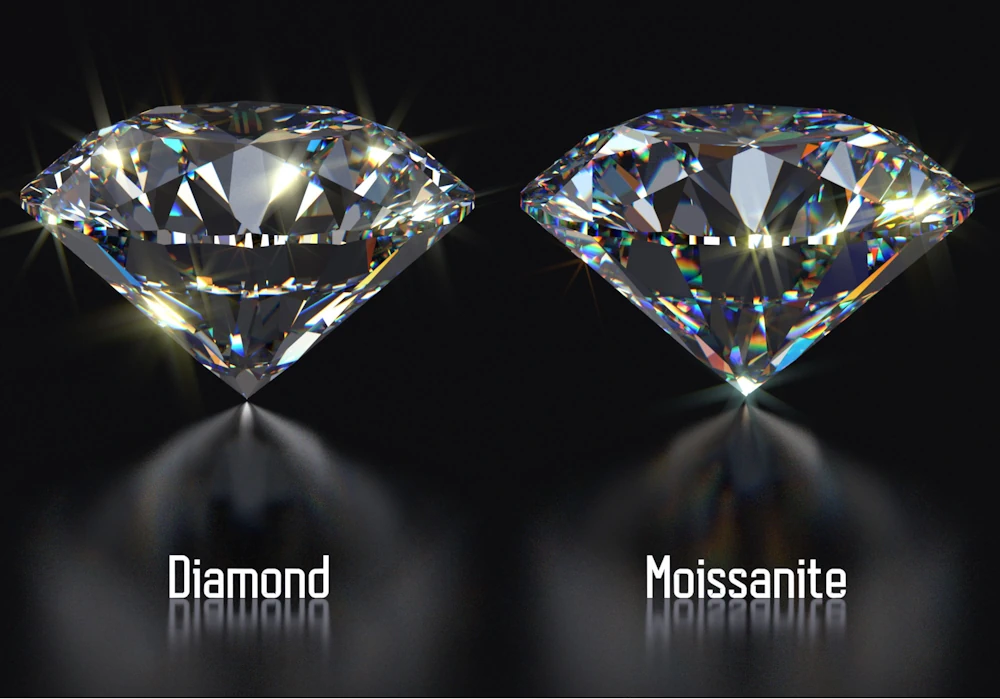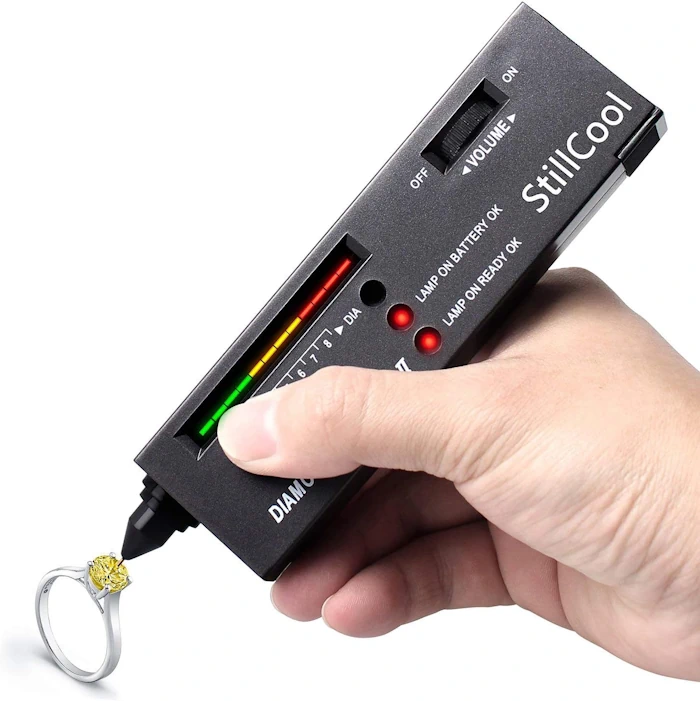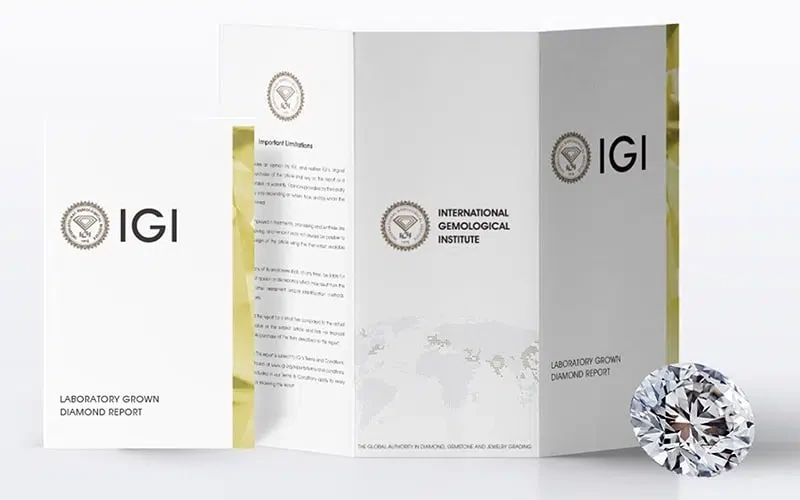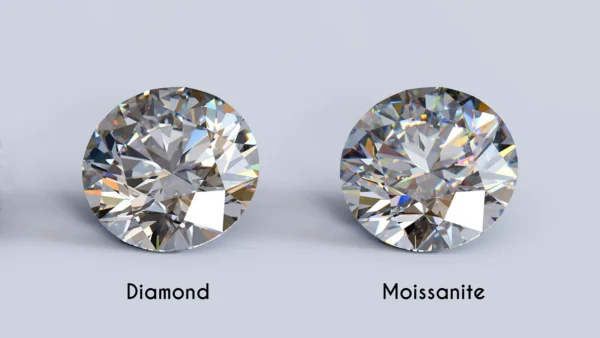Are Lab-Grown Diamonds and Moissanite the Same Thing?
To the untrained eye, lab-grown diamonds and moissanite might look alike. But they are not the same thing.
One is a real diamond. The other is a diamond lookalike.
Lab-grown diamonds are the gold standard of modern jewellery. They are made of pure carbon, just like mined diamonds. They offer real beauty, real quality, and real sparkle. Moissanite is a lovely option for very tight budgets. It looks brilliant, but it’s not a diamond. And for many people, that matters.
Let’s break down the differences so you can decide what fits your values and your style.
1. Composition
Lab-grown diamonds are made of pure carbon. That means they are chemically identical to natural diamonds. Moissanite is made of silicon carbide. It’s a different material with different properties, more often found in industrial uses.
2. Hardness
Diamonds, natural or lab-grown, are the hardest substance on Earth with a rating of 10 on the Mohs scale. This makes them extremely durable as well as hard.
Moissanite ranks at 9.25. Still very hard, but it can wear down more quickly with daily use.
3. Brilliance (White Light Reflection)
Lab-grown diamonds have sharp, clean brilliance. They reflect white light in a crisp, elegant way. Moissanite both sparkles and reflects more intensely. Some people love it, but others find it too flashy or artificial. Moissanite appears to be a whiter gem.

4. Fire (Color Dispersion)
Lab diamonds have subtle rainbow flashes. Moissanite shows more color in its sparkle, which can make it look synthetic, especially under bright lights.

5. Scintillation (Sparkle in Motion)
Diamonds give off defined, bold flashes as they move. Moissanite has a more glassy shimmer. It lacks the contrast that gives diamonds their dynamic sparkle.
6. Colour
Lab-grown diamonds come in every color, from icy white to vivid hues. They are available in D to Z and fancy colors.
Moissanite can appear slightly yellow or green, especially in larger stones. Newer, high-quality moissanites are treated to be colorless, but the tone can still differ slightly. Moissanite is also available in fancy colours but it is often extremely saturated and looks like costume jewellery because of that – obviously synthetic.
7. Clarity
Lab diamonds usually have minor, natural-looking inclusions. Most are graded VS or VVS. Moissanites are often flawless to the naked eye. They are grown to look clean, but can feel too perfect to some.
8. Weight (Density)
Diamonds are denser than moissanite. This means a 1-carat moissanite will look slightly larger than a 1-carat diamond.
9. Cost
Lab-grown diamonds are much more affordable than mined diamonds, but they are still a premium product. Moissanite is about 10 times cheaper. The price difference is huge. But some people won’t wear jewellery knowing it’s made with a stone that costs less than a dinner out.
10. Thermal Conductivity (Diamond Tester Response)
Lab-grown diamonds pass standard diamond testers. Moissanite often does too, but higher-end tools can still detect the difference.

11. Certification
Lab diamonds can be certified by major labs like GIA and IGI. They are graded for cut, clarity, color, and carat. Moissanite usually isn’t certified to the same standard. At best its done by a 2nd tier lab like GRA, who often give out blanket “D, Excellent Cut, VVS1” regardless of the actual quality – the only purpose of such a report is to ensure you have moissanite and not some cheaper alternative like CZ. It’s often sold without a formal grading report.

12. Durability
Lab-grown diamonds are nearly indestructible. They resist chips, scratches, and heat. Moissanite is durable enough for most wear, but over years it may show surface wear or lose some shine.
13. Appearance Under Magnification
Lab diamonds may show natural growth patterns or tiny metallic marks. Moissanite shows double refraction, which can make the stone look less crisp. Under a loupe, the difference becomes obvious.
14. Availability in Shapes and Sizes
Both stones are available in many shapes and sizes. But diamonds are cut with more attention to how light reflects, giving a more natural brilliance. Moissanite can sometimes look exaggerated due to how its facets interact with its double refraction.
15. Public Perception & Sentiment
Lab-grown diamonds are accepted as real diamonds. They are used in engagement rings, anniversary jewellery, and luxury designs. They are even worn and proudly shown off by celebrities. Moissanite is respected, but often seen as a diamond substitute. It’s becoming popular in the budget market, but it doesn’t carry the same status or meaning.
Conclusion: Know What You’re Buying
Moissanite is bright, beautiful, and affordable. If you’re on a very tight budget, it might be the right stone for you. But it isn’t a diamond. It doesn’t feel like one, and it won’t hold the same social or emotional value for many people.
Lab-grown diamonds offer the same beauty and structure as natural diamonds. They are real. They are refined. They are respected. You can wear them with pride, knowing you chose the smartest luxury in the jewellery world today.
It’s beauty. It’s brilliance. It’s the real thing.

